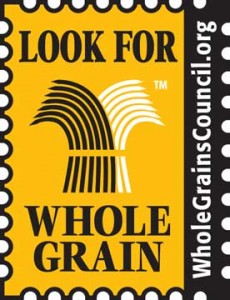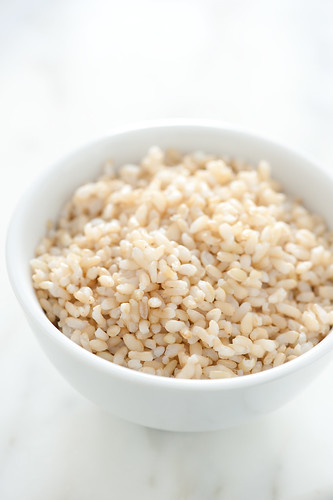Mission: Get the Kids to Like Whole Grains
Most mamas will confess that nothing makes them dread mealtime quite like a picky eater. Not only does it make it hard for anyone to enjoy time spent at the table, but the inevitable worry that you aren’t getting enough healthy food into your growing kids can also keep you up at night. We want our kids to like the foods that are good for them, but the fact is, getting kids to accept unfamiliar foods is a challenge. More often than not, all parents start out with the best of intentions—“My baby’s going to love all the foods I do!”—but the whining and the tears and occasional tantrum can wear even the strongest among us down. No wonder so many parents resort to fast food and take-out—sure, we know it isn’t healthy, but please, we just can’t take one more food fight!
Something parents really worry about is getting kids to eat and (hopefully!) enjoy whole grains. What if they don’t like the darker color? What if they don’t like the taste? What if I can’t get them to eat more than a few bites? How can I successfully introduce whole grains into my kids’ diet; or, if they’re already eating some whole grains, how can I get them to eat more?
Well, we’ve got lots of tips on ways to deal with picky eaters, but let’s take a cue from nature —specifically, let’s look at mama birds. They fly around all day, picking up bugs and seeds and other tidbits, then they fly back to their nests and shove the gleanings of the hunt into the open and waiting beaks of their babies. Skipping over the part about eating bugs (ew!), the key in this behavior is, mama birds start their babies on healthy, bird-friendly foods very early in life. Not only that, but mama birds don’t ask their babies if they want caterpillar for breakfast or cricket for dinner—that’s just what their babies get.
So how can we take this lesson from nature and make it part of our strategy for feeding our kids more whole grains? Here are just a few helpful tips from our friends at the Whole Grains Council!
5 Tips for Getting Kids to Like Whole Grains
1. Start ‘em early. A quick search online found multiple sources of brown-rice baby cereal, the whole-grain alternative to white-rice baby cereal, that ubiquitous first solid food. Not only will the whole-grain alternative get them used to the fuller, nuttier flavor of whole grains early on (yes, our babies have taste buds!), but brown rice is very easy to digest. Brown rice is also naturally low in fiber, so you don’t need to worry that brown rice cereal will upset baby’s tummy. Best of all, brown rice is fairly inexpensive—something to keep in mind if baby grows into a sports-playing teen that could eat you out of house and home! In fact, whole grains are packed full of important vitamins, minerals and nutrients, making them a smart investment for your whole household. And yes, dads, we’re thinking of you, too!
2. Feed ‘em (whole grains) often. Kids are constantly growing, sometimes faster than we can keep track of! One day your baby is just starting to crawl, and before you know it, your crawler has turned into a marathon runner. All this growth and activity takes energy, and whole grains are a great slow-burning fuel that also helps small tummies feel fuller longer. A piece of whole-wheat toast torn into small pieces with some fruit is an easy and healthy breakfast for your 10-month-old—especially since they’re just learning the satisfaction of hand + food = mouth. Toddlers take the joy of feeding themselves to a whole new level, so hand over that slice of whole-grain toast or a small container of ready-to-eat whole-grain cereal and let them go to town.
3. Work whole-grain options into special occasions. Whole-wheat pastry flour in your child’s birthday cake or cookies for a bake sale? You bet! Whole-grain pasta in that mac and cheese you’re making for your daughter’s first sleepover party? Absolutely! Buckwheat pancakes for a Silly Faces breakfast using banana slices for eyes and blueberries for smiles? Yes, please! Whole grains can play a role in any special dinner, dessert, or breakfast you can think of. Nothing makes an after-school snack seem special like a make-your-own bowl of yogurt, fruit and low-fat granola. Most teenagers seem to live on PB&J, so make whole-grain breads and rolls the only options in the breadbox. And when it’s time for that lazy Sunday morning breakfast, even the pickiest eater will have a hard time saying no to oatmeal with fruit or a few chocolate chips sprinkled on top.
4. Keep ‘em involved in making food choices. Careful here mamas—this does not mean that your kids should be the ones making the food choices for you! You’re probably familiar with the complaint that some kids will only eat chicken nuggets, hamburgers, French fries and so on. While there’s nothing wrong with letting your kids eat foods like these as an occasional treat, it’s important not to let these foods become the base of your child’s diet. If you see your 5-year-old enjoying a healthier meal, encourage him to tell you what he likes about what he’s eating. Maybe it’s that the baby carrots make for fun finger food, or maybe it’s the slurping sounds he can make while eating whole-grain spaghetti. Some kids will be totally impressed by a “tube sandwich,” using a whole grain wrap to hold the same amount of fillings you’d put in a regular sandwich. And if your child is a pizza fanatic, why not have a personal pizza night where whole-grain pitas are the base (and some grated carrots sneak their way into the pasta sauce)? Pay attention to what your child thinks is fun or cool or silly—those are the reactions you’re looking for. Giggles during dinner are so much better than fussing or tears!
 5. Read the labels. Did you know that whole grains sometimes hide in our foods? It’s always easiest to spot ingredients that use the word “whole,” like “whole-wheat flour” or “whole-grain oats,” but sometimes that word is missing. Grain ingredients like brown rice, wild rice, popcorn and oats are almost always whole grain. If you see grain ingredients with words like “flaked” or “cracked,” those are almost always whole grain, too. Next time you go grocery shopping, take a look at the ingredients on that box of crackers or that loaf of bread. Even better, look for the Whole Grain Stamp, a black-and-gold packaging symbol that calls out the grams of whole-grains-per-product-serving (see image at right). You might even be pleasantly surprised to see whole grains have been part of your meals for quite a while.
5. Read the labels. Did you know that whole grains sometimes hide in our foods? It’s always easiest to spot ingredients that use the word “whole,” like “whole-wheat flour” or “whole-grain oats,” but sometimes that word is missing. Grain ingredients like brown rice, wild rice, popcorn and oats are almost always whole grain. If you see grain ingredients with words like “flaked” or “cracked,” those are almost always whole grain, too. Next time you go grocery shopping, take a look at the ingredients on that box of crackers or that loaf of bread. Even better, look for the Whole Grain Stamp, a black-and-gold packaging symbol that calls out the grams of whole-grains-per-product-serving (see image at right). You might even be pleasantly surprised to see whole grains have been part of your meals for quite a while.
For more tips, tricks, info and recipes, be sure to visit www.wholegrainscouncil.org!
A big thanks to Kara Berrini, program manager for Oldways and the Whole Grains Council, for the whole-grain insight! Happy eating, mamas and baby birds! —Erin

